Crown Vic Rules
Revised: 2/4/2024; Changes Highlighted in Blue
LINEUP PROCEDURE
- Crown Vics will use our normal procedures for lineups unless otherwise advertised with the following exceptions.
- Any feature winner can start no further up than 11th on their next race at the track.(Note: increased purse races are exempt from this rule)
LEGAL CARS
- The only cars legal for competitions are 1995 or newer Ford Crown Victoria, Ford Crown Victoria Police Interceptor, Mercury Grand Marquis and Lincoln Town Car
BODY
- Bumpers must remain Stock with no Sharp Edges or Points
- Rear bumpers can not be braced up in any way
- Tow chains or hoops are required.
- Mirrors must be removed.
- Hood and trunk must have hood type pins for easy access. No Bolting Down.
- Numbers on the both doors and roof are required. Numbers must be at least 16″ tall.
ENGINE
- Must Remain Entirely stock 4.6L SOHC Engine.
- Manifold Must Remain Stock
- Air Filters Must Remain Stock
- Absolutely not adjustment to the ECM of any kind, Stock parameters must be in place when inspected
- Exhaust Pipes must go beyond the driver and exit from the side or rear of the car
- Muffler and Exhaust Components are not Required. Straight pipes under the vehicle are legal
DRIVELINE
- Transmission must Remain entirely stock.
- Rear end must Remain Entirely stock.
- Factory Ford Gear Only. 2.73, 3.27, 3.55 and 3.73 ratios are the only gear ratios legal
- No aftermarket Lockers
- You may lock the differential by use of stock Locking Device or Welding Rear Spider Gears
SUSPENSION
- No altering of the suspension including sway bar links.
- No Air Ride, No Cutter, No Heating and No Lowering of Springs.
- Shocks and Springs can only be replaced by the same stock parts or OEM Replacements. (Can cut two 2″ holes above the rear shocks to access top shock nut)
- Speedway Motors Rubber Coil Spring Part# 5501285 are the ONLY Spring Rubbers/Spacers allowed to be used at any time.
- Spring Rubbers are ONLY LEGAL in the Right Front Spring.
- You may adjust Caster and Camber as factory adjustments allow however NO modification of factory suspension is permitted
INTERIOR
- Steering Column must remain STOCK. Addition of a Quick Release and racing wheel is permitted
- Dash must remain STOCK. All Airbags in the car MUST be removed
- Pedals must remain STOCK
- All Glass must be removed except for the Windshield. Windshield Glass can be left in or removed.
- Windshield must have 3 or more Solid Steel Vertical Bars in front of the driver. If windshield glass is left in, the bars must be inside the windshield.
ROLL CAGE
- Must be a minimum 4 point cage with 4 curved door bars on the driver’s side. Straight bars can be used on the passenger side.
- Cage must be welded to the frame and not the floor pan.
- A driver’s door plate is required. It must be 1/4” thick steel and measure 18” by 48”. It can be on the outside or inside of the car.
WHEELS AND TIRES
- All Season Tires Only
- The Only tire Sizes Legal are 235/55/17, 225/60/16 and 215/70/15.
- No High Performance, Auto Cross, or Directional Tires Permitted
- No Soaking, Softening, Grooving, Siping or Needling of Tires
- Must use stock steel wheels
- All 4 Wheels must be the same size and offset
- No Wheel Spacers
- No offset wheels on Cars 2001 and Newer
FUEL TANK
- Must Remain STOCK and in the stock position
- Replacing with a Fuel Cell or anything other than the stock tank is NOT Permitted
BATTERY
- Must Remain in stock location or moved to the Rear Passenger Floorboard
- If moved, the battery must be enclosed in a battery box that is securely mounted to the frame
- If battery is moved, an All Power Kill Switch is required to be placed behind the driver within reach of safety officials standing outside of the Car
SAFETY EQUIPMENT
Safety equipment specifications listed below are listed as a guide and are only a minimum standard. These minimum standards may not be sufficient enough to protect a driver from injury or death from some incidents. It is the responsibility of the driver, car owner, and crew to ensure that the safety equipment on the car is properly installed, working as intended, and is sufficient to protect the driver from any incidents that occur. This may include using safety equipment that goes above and beyond the minimum specifications and recommended equipment listed below.
- Seats:
- Full containment type seats constructed of aluminum to the general design specifications of SFI 39.2 standards are highly recommended. Design should include comprehensive head surround, shoulder and torso support system, energy impact foam, and removable head foam.
- Up fitting a current seat with bolt on kits will be permitted with a seat manufacturer produced kit and a base seat acceptable to the seat manufacturer. Components should include comprehensive head surround, shoulder and torso support system, energy impact foam. Must be installed in accordance to seat manufacturer’s instructions.
- Seats must be used as supplied and instructed by the seat manufacturer with the exception of trimming the length of the left side head surround for the purpose of egress only. If the left side head surround is trimmed to a distance that is less than the most forward surface of the drivers helmet (usually the area crossing the chin) then a left side head net meeting the SFI 37.1 must be installed with a quick release latch.
- Seats must be mounted to a seat frame that is welded to the race car frame/roll cage structure. Attaching points, angles, and materials for the seat frame and mounting of the seat to the seat frame must be in accordance to the seat manufacturer’s instructions.
- At minimum, a racing seat is Required and must be bolted to the cage, not the floor, with a minimum 3/8″ Grade 5 or Higher Bolts
- Restraints:
- The use of a 5, 6 or 7 point driver restraint system certified to SFI Spec 16.1 or 16.5 is REQUIRED no exceptions. All driver restraint systems shall not be in excess of 3 years of age past the date of manufacture. The use of a 7 point driver restraint system is strongly recommended. All mounting points of the racing harness MUST be mounted properly in accordance with the manufacturer’s instructions, and securely mounted to the cage with the use of grade 5 or better hardware.
- Window Nets:
- Window Nets certified to SFI Spec 27.1 are REQUIRED and must be mounted in accordance with the manufacture’s instructions and technical director’s satisfaction.
- Driver Worn Equipment:
- A helmet certified to Snell SA2010/FIA-8860, Snell SA2015/FIA-8860, SFI 31.1/2010 or SFI 31.1/2015 is REQUIRED.
- A driver suit certified to SFI Spec 3.2A/5 is REQUIRED.
- Gloves certified to SFI Spec 3.3/5 are REQUIRED.
- Socks and Shoes certified to SFI Spec 3.3 are REQUIRED.
- Head and Neck Restraint Devices/Systems are Highly Recommended
- At all times during an Event (practice, qualifying, and competition), if used, drivers must connect their helmet to a head and neck restraint device/system certified to SFI Spec 38.1. The device/system must display a valid SFI Spec 38.1 label. The head and neck restraint device/system, when connected, must conform to the manufacturer’s mounting instructions, and must be configured, maintained and used in accordance with the manufacturer’s instructions
- Cockpit Area:
- No sharp or protruding edges in or around the cockpit, which would impede the driver’s rapid exit from the car.
- Windshield screens mandatory. Screens must be securely fastened.
- Flame retardant seat, roll bar, knee and steering pads or padding are recommended.
- Fire Suppression:
- An in-car Fire Suppression system is Highly Recommended.
- All race cars should be be equipped with a thermally deployed automatic fire suppression system. The fire suppression system will consist of a DOT approved cylinder manufactured from aluminum or steel with a capacity of ten (10) lbs. of fire extinguishing agent, steel or steel reinforced lines, and two (2) thermally activated discharge nozzles.
- All systems must meet or exceed SFI 17.1 specifications.
- Systems must be fully charged with ten (10) lbs. of DuPont FE-36, 3M NOVEC 1230, or Fire Aide and display a legible and valid SFI and manufacturer label depicting fire extinguishing agent, capacity, and certification date. Cylinders that or beyond useful certification date must be inspected, serviced and re-labeled by the manufacturer.
- Cylinders must be mounted forward of the fuel cell. Cylinders must be securely mounted to the frame/roll cage assembly. The certification label must be unobstructed and easily accessible for inspection when the mounting is complete.
- The cylinder must be connected to the nozzles with steel or steel reinforced lines.
- Two (2) thermally activated nozzles must be used. One (1) nozzle must be located directly above the fuel cell in the fuel cell area and the second nozzle must be located in the driver cockpit area.
- An optional manual override cable may be added to the system.
- Drivers under the age of 18 are REQUIRED to have a HEAD SOCK, window net, gloves, and either a neck collar or a head and neck restraint system in addition to all other required safety equipment in place.
RULE BOOK DISCLAIMER
The rules and/or regulations set forth herein are designed to provide for the orderly conduct of racing events and to establish minimum acceptable requirements for such events. These rules shall govern the condition of all events, and by participating in these events, all participants are deemed to have complied with these rules. No express or implied warranty of safety shall result from publications of or compliance with these rules and/or regulations. They are intended as a guide for the conduct of the sport and are in no way a guarantee against injury or death to a participant, spectator or official.
The race director shall be empowered to permit minor deviation from any of the specifications herein or impose any further restrictions that in his opinion do not alter the minimum acceptable requirements. No expressed or implied warranty of safety shall result from such altercation of specifications. Any interpretation or deviation of these rules is left to the discretion of the officials. Their decision is final.

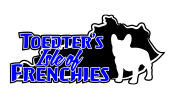
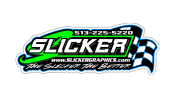
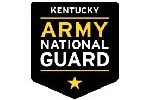

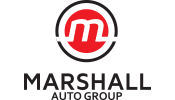
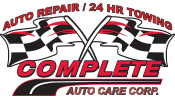
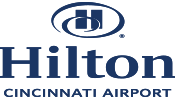
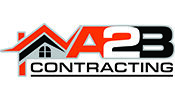
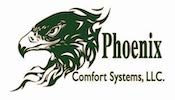
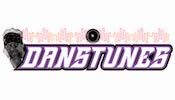
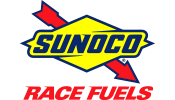
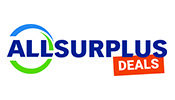
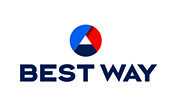
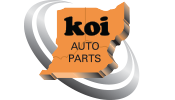
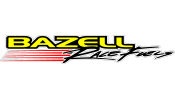
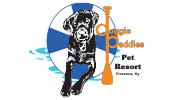
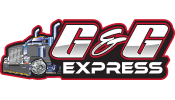
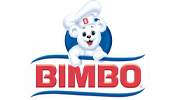
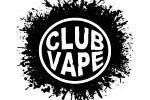
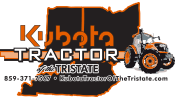
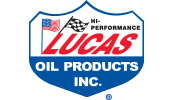

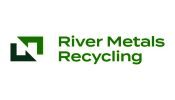

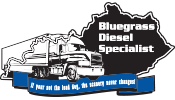

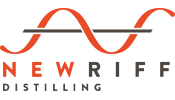
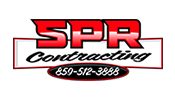
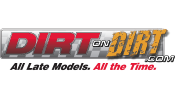
64 Comments